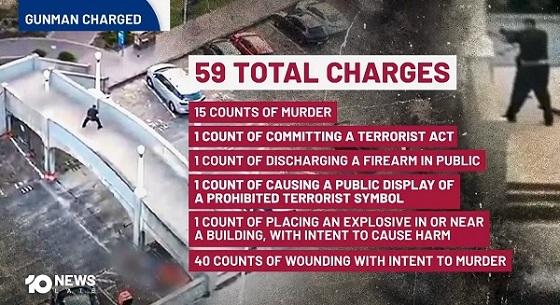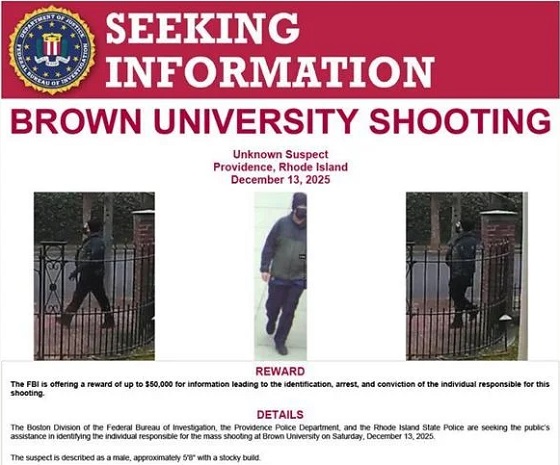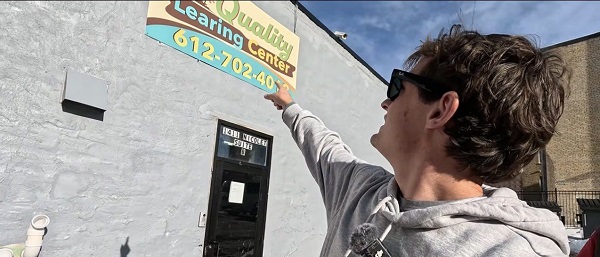Crime
Yesterday my sister was brutally assaulted by two women

This is posted with permission from Nicole Safron. Her sister survived a terrifying experience at their home near Sylvan Lake this week.
Following Nicole’s post is the RCMP report to the media on the alleged crime(s)
Yesterday my sister was brutally assaulted by two women
These women had been dropped off in front of her garage with a blue bag by a green ford truck. My sister who was upstairs in her home with her daughter and newborn baby looked out the window to see the girls jump out of the vehicle and the truck take off through her fence across the canola field.
She immediately called her husband and then a neighbor who is about a mile and a half away who could be there as soon as possible. JUST a week prior to this, a man walked into her home in broad daylight asking where Evergreen hall was, and later arrested (and is known to police) so she was taking it seriously. She got off the phone with her husband who called 911 for her at 8:44 am to dispatch police to her. She then activated her alarm system which has a loud outdoor siren to hopefully scare them away. The pair fled on foot towards the road. My sister, left her kids upstairs in the house (thankfully) locked the house and followed the girls to the end of the driveway in her car, while on the phone with my dad, to ensure she knew where the girls were. The neighbor got there at the same time and the girls were laying in the grass with the blue bag.
Meanwhile the green truck was speeding across the fields towards my other sisters home going through the fences. So the neighbor decided it would be good to make sure she was ok as well. She was still on the phone with my dad in her SUV when the girls attacked her punching her in the face and ripping her out of her vehicle. with my dad helpless on the other line.
The girls were kicking and punching her and telling her they were going to shoot her in the face. My sister was pleading for her life telling them she has a newborn baby and children and to take her car. My sister was fighting for her life in a ditch in rural Alberta wile my dad listened on the phone knowing anything could happen to his daughter.
The girls then got into my sisters vehicle and tore off towards highway 11, erratically driving down the wrong side of the highway at 160 km/hr + into oncoming traffic.
Meanwhile the truck that had crashed through the fences had caught fire behind my other sisters home after driving about 3/4 of a mile through fences and crop. The men in the truck had fled on foot. One of them stealing a vehicle from the neighbors down the road.
It was not until aprox 9:37am when the first police showed up out there.
My sister who was attacked did not see an officer until after 10:00am.
The reason I am writing this out in detail is to bring awareness to the crisis that we are facing in central Alberta with crime and drug related issues and thefts. Rurally it takes oficers time to get to victims. There are no other houses and rarely are others home. It is a hopeless feeling and people are scared to be home.
This is beyond petty theft. This is peoples lives and families at risk. You better believe what both my sister and my dad experienced yesterday will stick with them for years to come.
There is a meeting on Thursday November 7th from 6pm to 8pm in Rocky mountain house at the Lou Soppit centre with Doug Schweitzer, the minister of justice. I would encourage anyone who can to attend, in addition to writing a letter to your MLA. Honorable Jason Nixon has been outstanding with this situation contacting the family shortly after the events to discuss.
Lets send him the tools he needs to make a change. We need these drug houses wiped out. In ALL of ALBERTA. Central and rural Alberta is getting scary. These people need to be locked up. Both of these women had been arrested before and are known to police. They get released in a few days and have nothing to loose. I feel sorry for our police forces when they try and help us and the criminals are released within days!
They are dangerous.
I know I am speculating / putting the puzzle pieces together, however, those women had the intent of an armed robbery at my sisters home that morning. Armed and planned. Perhaps another vehicle would come and pick them up or they would meet the ford in the field.
But what I do know is that I am thankful Jolene was able to keep them away from her home, and her children did not have to witness anything.
You better believe they would have got into her home in the hour it took police to arrive. Or that our neighbor or my father would be in the wrong for trying to protect her.
And it may have been a different story entirely.
- Truck left by intruders
- Fence ruined as intruders excaped
- Guns recovered by police
From Sylvan Lake RCMP:
The RCMP have laid charges against two females following several incidents that began with a complaint of suspicious females in Sylvan Lake and finished with a collision in Red Deer.
On October 23 at 8:48 a.m., Sylvan Lake RCMP responded to a rural complaint, that two females, believed to be intoxicated, were in a ditch. They were allegedly dropped off by a male driving a truck and that truck had driven through a fence. Property representatives in the area were taking steps to identify and detain the females. The truck, later identified as a 1997 Ford F150, was abandoned in a nearby field, on fire. Eckville Fire department attended and assisted with extinguishing the vehicle fire.
Sylvan Lake RCMP received a further update that one female property representative had been assaulted and had her vehicle, a Dodge Durango, stolen. RCMP Police dog services, Rocky Mountain House RCMP, and RCMP air services were deployed to the location to assist.
A short time later the Dodge Durango was observed travelling at a high rate of speed eastbound on Highway 11. The vehicle entered Red Deer. (see background media release).
Sylvan Lake RCMP later recovered the Ford F150, which had been stolen out of the Rocky Mountain house area. Two prohibited firearms were located, abandoned, in the area.
A second vehicle, a 2007 grey Chevrolet Silverado was stolen from a nearby residence and remains outstanding. The RCMP believe that the male who dropped off the suspect females stole the Silverado from an area property.
Sylvan Lake RCMP have charged Chelsea Crowley (27) and Brianna Crookedlegs (20) with the following offences:
– 2 counts of Possession of a Prohibited Weapon
– 2 counts of Possession of a weapon for a Dangerous Purpose
– 2 counts of Possession of Weapon without holding a licence
– 2 counts of Possession of a Prohibited or Restricted Firearm
– 1 count of Robbery
Crowley faces an additional five counts of Breach of Recognizance. Both females are scheduled for a Judicial Interim Release hearing on October 28.
Investigation into the circumstances of the recovered Ford F150 and the theft of the 2007 grey Chevrolet Silverado continues. The Silverado is described as grey, with black rims, a small push bar on the front and small dents.
If you have any information about these incidents, or information on the location of the stolen Chevrolet Silverado please contact the Sylvan Lake RCMP at 403-858-7200. If you wish to remain anonymous, you can contact Crime Stoppers at 1-800-222-8477 (TIPS), online at www.P3Tips.com or by using the “P3 Tips” app available through the Apple App or Google Play Store.
Crime
The Uncomfortable Demographics of Islamist Bloodshed—and Why “Islamophobia” Deflection Increases the Threat


Addressing realities directly is the only path toward protecting communities, confronting extremism, and preventing further loss of life, Canadian national security expert argues.
After attacks by Islamic extremists, a familiar pattern follows. Debate erupts. Commentary and interviews flood the media. Op-eds, narratives, talking points, and competing interpretations proliferate in the immediate aftermath of bloodshed. The brief interval since the Bondi beach attack is no exception.
Many of these responses condemn the violence and call for solidarity between Muslims and non-Muslims, as well as for broader societal unity. Their core message is commendable, and I support it: extremist violence is horrific, societies must stand united, and communities most commonly targeted by Islamic extremists—Jews, Christians, non-Muslim minorities, and moderate Muslims—deserve to live in safety and be protected.
Yet many of these info-space engagements miss the mark or cater to a narrow audience of wonks. A recurring concern is that, at some point, many of these engagements suggest, infer, or outright insinuate that non-Muslims, or predominantly non-Muslim societies, are somehow expected or obligated to interpret these attacks through an Islamic or Muslim-impact lens. This framing is frequently reinforced by a familiar “not a true Muslim” narrative regarding the perpetrators, alongside warnings about the risks of Islamophobia.
These misaligned expectations collide with a number of uncomfortable but unavoidable truths. Extremist groups such as ISIS, Al-Qaeda, Hamas, Hezbollah, and decentralized attackers with no formal affiliations have repeatedly and explicitly justified their violence through interpretations of Islamic texts and Islamic history. While most Muslims reject these interpretations, it remains equally true that large, dynamic groups of Muslims worldwide do not—and that these groups are well prepared to, and regularly do, use violence to advance their version of Islam.
Islamic extremist movements do not, and did not, emerge in a vacuum. They draw from the broader Islamic context. This fact is observable, persistent, and cannot be wished or washed away, no matter how hard some may try or many may wish otherwise.
Given this reality, it follows that for most non-Muslims—many of whom do not have detailed knowledge of Islam, its internal theological debates, historical divisions, or political evolution—and for a considerable number of Muslims as well, Islamic extremist violence is perceived as connected to Islam as it manifests globally. This perception persists regardless of nuance, disclaimers, or internal distinctions within the faith and among its followers.
THE COST OF DENIAL AND DEFLECTION
Denying or deflecting from these observable connections prevents society from addressing the central issues following an Islamic extremist attack in a Western country: the fatalities and injuries, how the violence is perceived and experienced by surviving victims, how it is experienced and understood by the majority non-Muslim population, how it is interpreted by non-Muslim governments responsible for public safety, and how it is received by allied nations. Worse, refusing to confront these difficult truths—or branding legitimate concerns as Islamophobia—creates a vacuum, one readily filled by extremist voices and adversarial actors eager to poison and pollute the discussion.
Following such attacks, in addition to thinking first of the direct victims, I sympathize with my Muslim family, friends, colleagues, moderate Muslims worldwide, and Muslim victims of Islamic extremism, particularly given that anti-Muslim bigotry is a real problem they face. For Muslim victims of Islamic extremism, that bigotry constitutes a second blow they must endure. Personal sympathy, however, does not translate into an obligation to center Muslim communal concerns when they were not the targets of the attack. Nor does it impose a public obligation or override how societies can, do, or should process and respond to violence directed at them by Islamic extremists.
As it applies to the general public in Western nations, the principle is simple: there should be no expectation that non-Muslims consider Islam, inter-Islamic identity conflicts, internal theological disputes, or the broader impact on the global Muslim community, when responding to attacks carried out by Islamic extremists. That is, unless Muslims were the victims, in which case some consideration is appropriate.
Quite bluntly, non-Muslims are not required to do so and are entitled to reject and push back against any suggestion that they must or should. Pointedly, they are not Muslims, a fact far too many now seem to overlook.
The arguments presented here will be uncomfortable for many and will likely provoke polarizing discussion. Nonetheless, they articulate an important, human-centered position regarding how Islamic extremist attacks in Western nations are commonly interpreted and understood by non-Muslim majority populations.
Non-Muslims are free to give no consideration to Muslim interests at any time, particularly following an Islamic extremist attack against non-Muslims in a non-Muslim country. The sole exception is that governments retain an obligation to ensure the safety and protection of their Muslim citizens, who face real and heightened threats during these periods. This does not suggest that non-Muslims cannot consider Muslim community members; it simply affirms that they are under no obligation to do so.
The impulse for Muslims to distance moderate Muslims and Islam from extremist attacks—such as the targeting of Jews in Australia or foiled Christmas market plots in Poland and Germany—is understandable.
Muslims do so to protect their own interests, the interests of fellow Muslims, and the reputation of Islam itself. Yet this impulse frequently collapses into the “No True Scotsman” fallacy, pointing to peaceful Muslims as the baseline while asserting that the attackers were not “true Muslims.”
Such claims oversimplify the reality of Islam as it manifests globally and fail to address the legitimate political and social consequences that follow Islamic extremist attacks in predominantly non-Muslim Western societies. These deflections frequently produce unintended effects, such as strengthening anti-Muslim extremist sentiments and movements and undermining efforts to diminish them.
The central issue for public discourse after an Islamic extremist attack is not debating whether the perpetrators were “true” or “false” Muslims, nor assessing downstream impacts on Muslim communities—unless they were the targets.
It is a societal effort to understand why radical ideologies continue to emerge from varying—yet often overlapping—interpretations of Islam, how political struggles within the Muslim world contribute to these ideologies, and how non-Muslim-majority Western countries can realistically and effectively confront and mitigate threats related to Islamic extremism before the next attack occurs and more non-Muslim and Muslim lives are lost.
Addressing these realities directly is the only path toward protecting communities, confronting extremism, and preventing further loss of life.
Ian Bradbury, a global security specialist with over 25 years experience, transitioned from Defence and NatSec roles to found Terra Nova Strategic Management (2009) and 1NAEF (2014). A TEDx, UN, NATO, and Parliament speaker, he focuses on terrorism, hybrid warfare, conflict aid, stability operations, and geo-strategy.
The Bureau is a reader-supported publication.
To receive new posts and support my work, consider becoming a free or paid subscriber.
Crime
Brown University shooter dead of apparent self-inflicted gunshot wound

From The Center Square
By
Rhode Island officials said the suspected gunman in the Brown University mass shooting has been found dead of an apparent self-inflicted gunshot wound, more than 50 miles away in a storage facility in southern New Hampshire.
The shooter was identified as Claudio Manuel Neves-Valente, a 48-year-old Brown student and Portuguese national. Neves-Valente was found dead with a satchel containing two firearms inside in the storage facility, authorities said.
“He took his own life tonight,” Providence police chief Oscar Perez said at a press conference, noting that local, state and federal law officials spent days poring over video evidence, license plate data and hundreds of investigative tips in pursuit of the suspect.
Perez credited cooperation between federal state and local law enforcement officials, as well as the Providence community, which he said provided the video evidence needed to help authorities crack the case.
“The community stepped up,” he said. “It was all about groundwork, public assistance, interviews with individuals, and good old fashioned policing.”
Rhode Island Attorney General Peter Neronha said the “person of interest” identified by private videos contacted authorities on Wednesday and provided information that led to his whereabouts.
“He blew the case right open, blew it open,” Neronha said. “That person led us to the car, which led us to the name, which led us to the photograph of that individual.”
“And that’s how these cases sometimes go,” he said. “You can feel like you’re not making a lot of progress. You can feel like you’re chasing leaves and they don’t work out. But the team keeps going.”
The discovery of the suspect’s body caps an intense six-day manhunt spanning several New England states, which put communities from Providence to southern New Hampshire on edge.
“We got him,” FBI special agent in charge for Boston Ted Docks said at Thursday night’s briefing. “Even though the suspect was found dead tonight our work is not done. There are many questions that need to be answered.”
He said the FBI deployed around 500 agents to assist local authorities in the investigation, in addition to offering a $50,000 reward. He says that officials are still looking into the suspect’s motive.
Two students were killed and nine others were injured in the Brown University shooting Saturday, which happened when an undetected gunman entered the Barus and Holley building on campus, where students were taking exams before the holiday break. Providence authorities briefly detained a person in the shooting earlier in the week, but then released them.
Investigators said they are also examining the possibility that the Brown case is connected to the killing of a Massachusetts Institute of Technology professor in his hometown.
An unidentified gunman shot MIT professor Nuno Loureiro multiple times inside his home in Brookline, about 50 miles north of Providence, according to authorities. He died at a local hospital on Tuesday.
Leah Foley, U.S. attorney for Massachusetts, was expected to hold a news briefing late Thursday night to discuss the connection with the MIT shooting.
-

 International2 days ago
International2 days ago“Captured and flown out”: Trump announces dramatic capture of Maduro
-

 International2 days ago
International2 days agoTrump Says U.S. Strike Captured Nicolás Maduro and Wife Cilia Flores; Bondi Says Couple Possessed Machine Guns
-

 Energy1 day ago
Energy1 day agoThe U.S. Just Removed a Dictator and Canada is Collateral Damage
-

 International1 day ago
International1 day agoUS Justice Department Accusing Maduro’s Inner Circle of a Narco-State Conspiracy
-

 Haultain Research1 day ago
Haultain Research1 day agoTrying to Defend Maduro’s Legitimacy
-

 Business2 days ago
Business2 days agoVacant Somali Daycares In Viral Videos Are Also Linked To $300 Million ‘Feeding Our Future’ Fraud
-

 Daily Caller22 hours ago
Daily Caller22 hours agoTrump Says US Going To Run Venezuela After Nabbing Maduro
-

 International1 day ago
International1 day agoU.S. Claims Western Hemispheric Domination, Denies Russia Security Interests On Its Own Border






